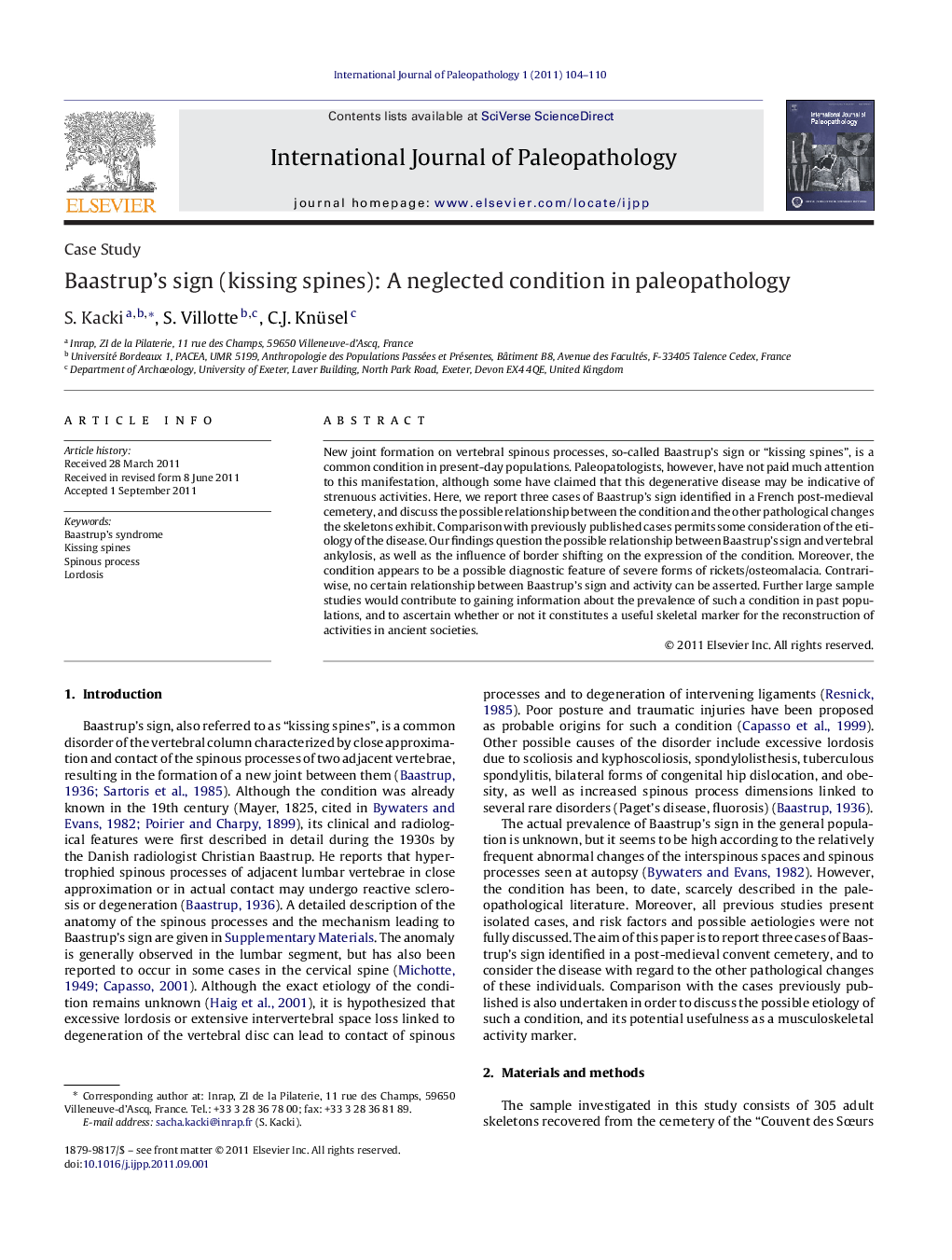| Article ID | Journal | Published Year | Pages | File Type |
|---|---|---|---|---|
| 101446 | International Journal of Paleopathology | 2011 | 7 Pages |
New joint formation on vertebral spinous processes, so-called Baastrup's sign or “kissing spines”, is a common condition in present-day populations. Paleopatologists, however, have not paid much attention to this manifestation, although some have claimed that this degenerative disease may be indicative of strenuous activities. Here, we report three cases of Baastrup's sign identified in a French post-medieval cemetery, and discuss the possible relationship between the condition and the other pathological changes the skeletons exhibit. Comparison with previously published cases permits some consideration of the etiology of the disease. Our findings question the possible relationship between Baastrup's sign and vertebral ankylosis, as well as the influence of border shifting on the expression of the condition. Moreover, the condition appears to be a possible diagnostic feature of severe forms of rickets/osteomalacia. Contrariwise, no certain relationship between Baastrup's sign and activity can be asserted. Further large sample studies would contribute to gaining information about the prevalence of such a condition in past populations, and to ascertain whether or not it constitutes a useful skeletal marker for the reconstruction of activities in ancient societies.
► The first population-based study of Baastrup's sign in paleopathology. ► Findings question the influence of vertebral ankylosis and border shifting on the occurrence of the condition. ► Baastrup's sign may be a feature of severe forms of rickets/osteomalacia. ► No certain relationship between Baastrup's sign and activity can be asserted.
